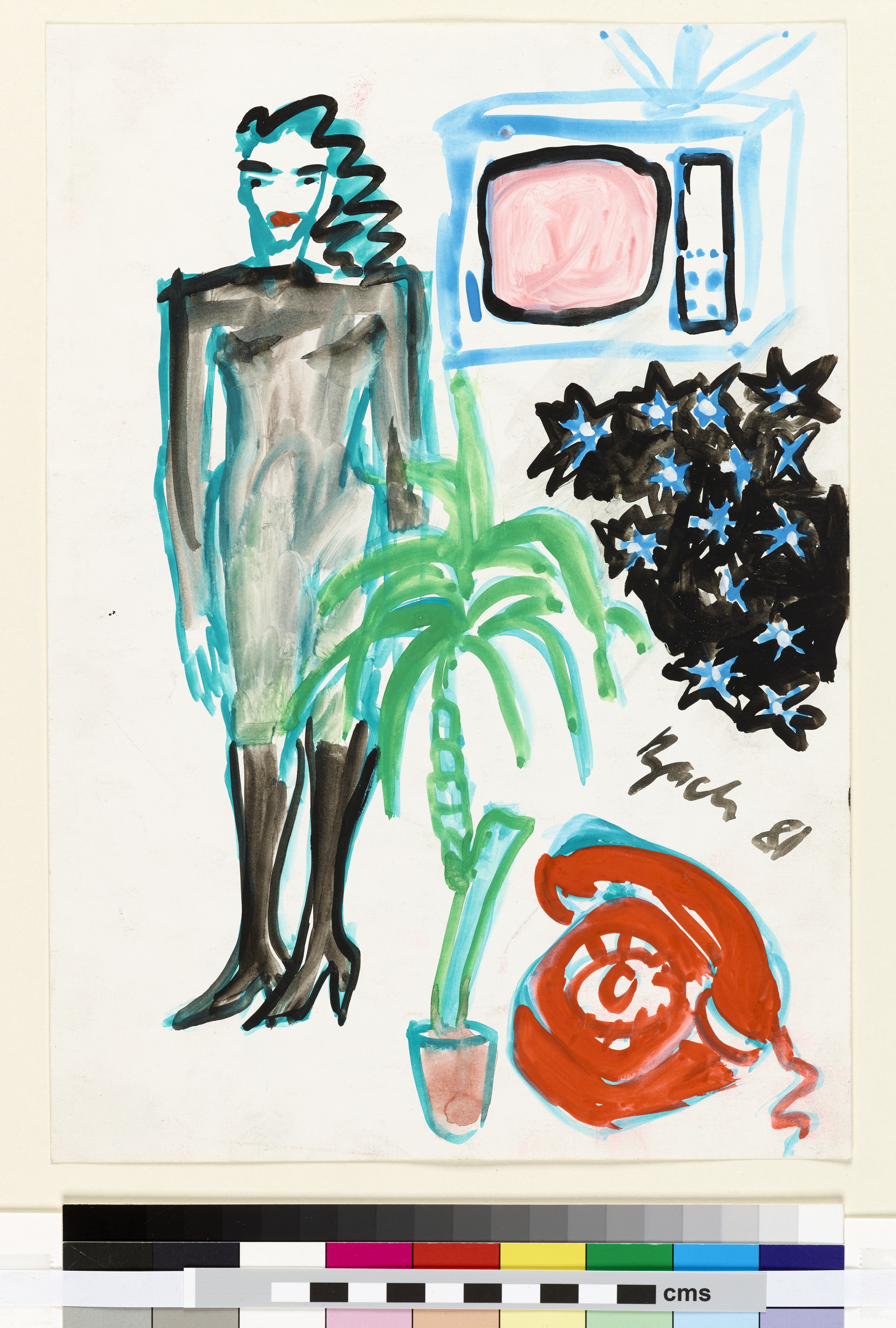Elvira Bach works primarily in painting, drawing, print making and sculpture. A recurring motif in her work is figurative representations of women using her hyper-expressive style to deconstruct conventional depictions of femininity. Bach was an important figure in the Neo-Expressionist movement in the 1980s and 90s and is especially associated with the ‘Neue Wilde’ generation of artists. Like the work of her Neo-Expressionist contemporaries, Bach’s practice is characterised by vivid, flamboyant colours and a strong, gestural style that stood in opposition to the dominant trends of conceptual and minimalist art.
The works are unique watercolour and crayon works on paper that complement a print of hers already in the collection at the Ashmolean Museum of Art and Archaeology, University of Oxford.They are early works that exemplify her expressive, figurative language and deployment of colour often involving her own life and representing herself. A work from 1980 depicts a period of lovesickness, showing the artist lounging on a bed next to a bright red heart. Another work is an image of celebration featuring glasses of red wine and strawberries strewn on the floor between her legs. A third work from 1981, shows the artist at home amongst various domestic items; a bright red telephone, a television and a potted palm tree. The dynamic A3 work from 1982 was made during a residency in the Dominican Republic. It can be interpreted as a depiction of herself again, dancing with her partner against a deep blue night sky. The motifs and the artistic language are typical of Bach appearing in many of her later drawings and paintings.
The Ashmolean's collection of works on paper include a group of German Neo-Expressionist prints by artists such as Georg Baselitz, A.R. Penck, Markus Lüpertz. Bach has been represented through one untitled screen print from 1983. Women artists are underrepresented in the Neo-Expressionist collection. This acquisition will assist in creating representative and inclusive narratives of the movement at the Ashmolean.


